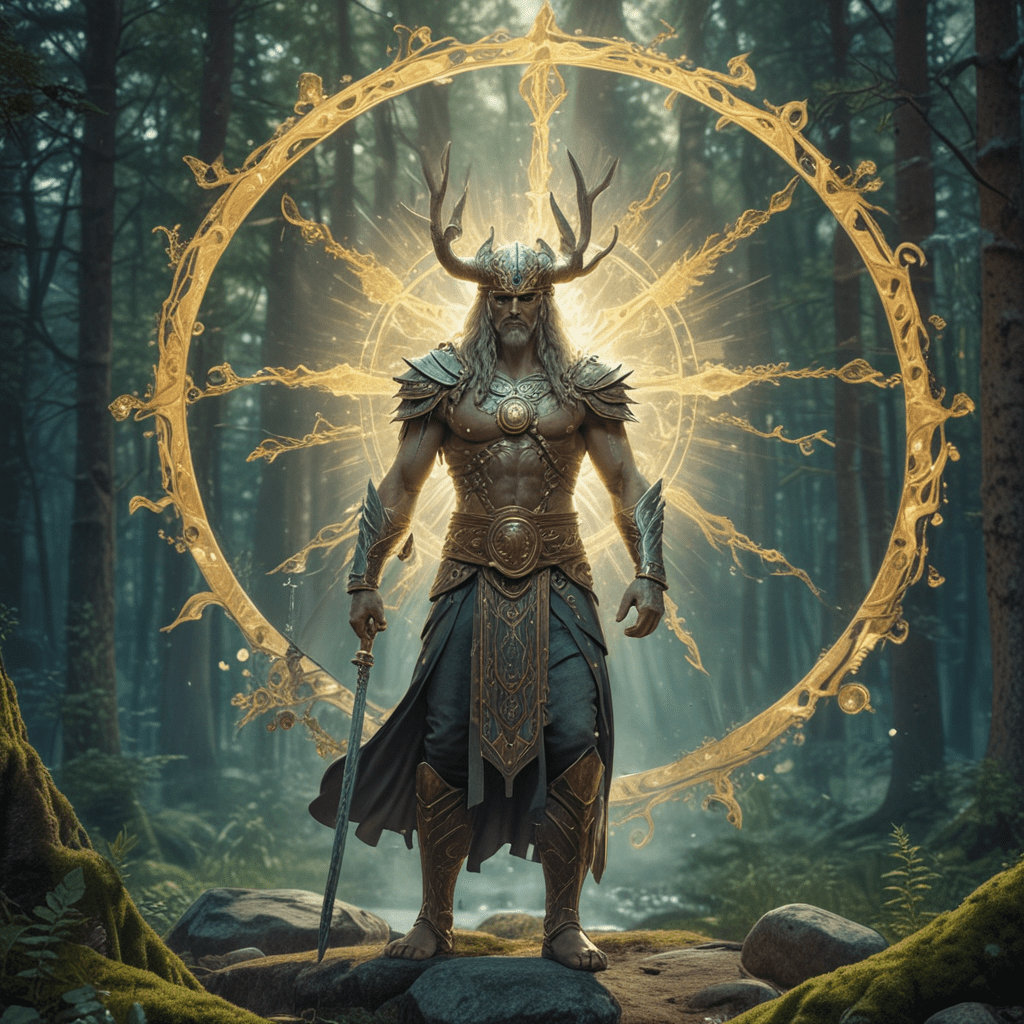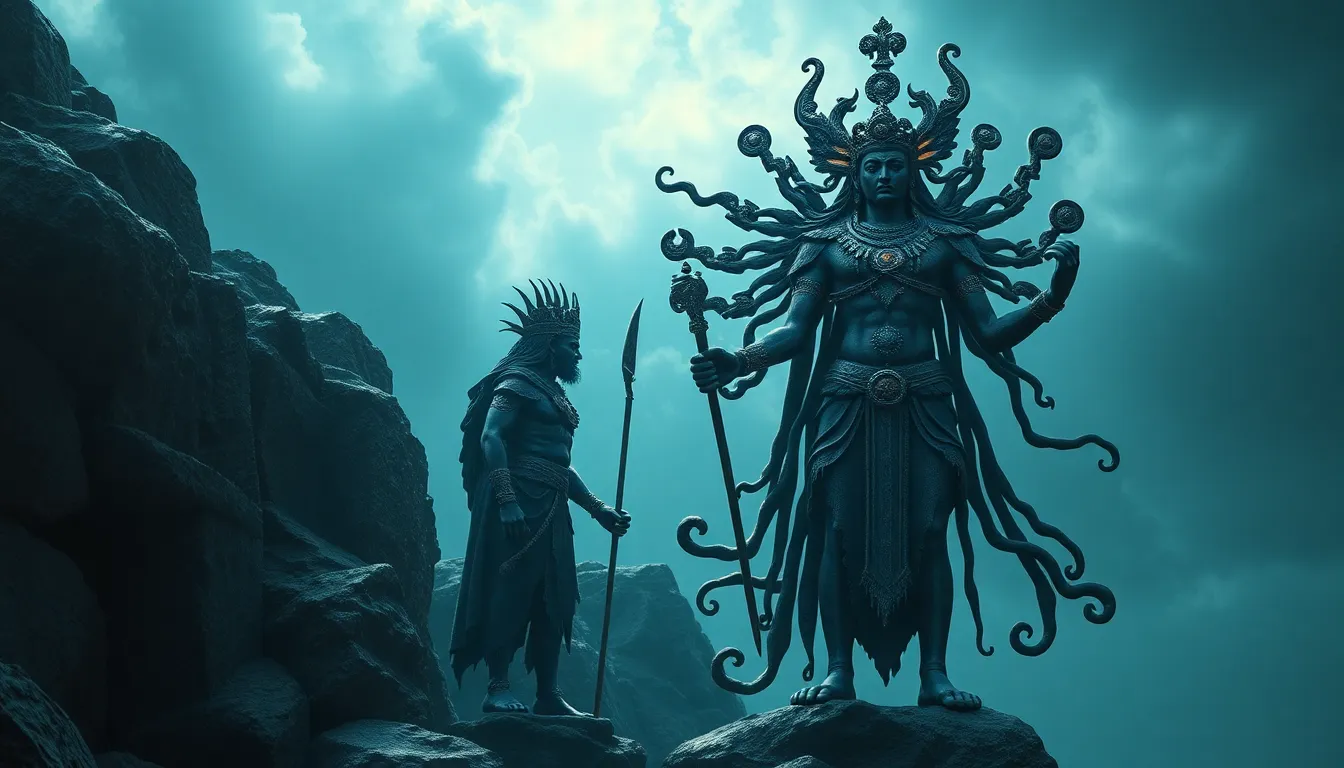1. Introduction
Nestled within the enigmatic forests and shimmering lakes of Finland lies a realm of enchantment where magic and mysticism intertwine. Finnish mythology, deeply rooted in ancient beliefs and traditions, weaves tales of mythical beings, mystical objects, and rituals that have captivated imaginations for centuries. This enchanting realm, where the natural world teems with spirits, and heroes embark on extraordinary quests, has left an indelible mark on Finnish culture and beyond.
2. The Supernatural Realm
At the heart of Finnish mythology lies a vibrant pantheon of supernatural beings, each possessing unique powers and domains. Väinämöinen, the Eternal Singer, emerges as the central figure, a wise and enigmatic bard whose magical incantations can shape reality. Joukahainen, the Master of Magic, wields cunning and deception to outwit his opponents. Meanwhile, Louhi, the Mistress of the North, presides over the realm of Pohjola, a mysterious land hidden behind towering mountains, where magic permeates every aspect of life.
3. Ancient Elements
In Finnish mythology, the natural elements possess immense power and influence. Fire, a life-giving force, brings warmth and sustenance, yet its destructive force can raze forests and villages alike. Water, revered as the source of life and renewal, nourishes the land and its inhabitants, while Earth, the Mother of All, provides stability and sustenance to all living beings. Air, the invisible realm, is believed to be the abode of spirits, whispers of ancient wisdom carried on the wind.
4. Mystical Objects
Numerous mystical objects hold immense power within Finnish mythology. The Sampo, a legendary mill, is said to possess the ability to create anything its owner desires, from riches to health and happiness. The Magic Sword, wielded by heroes and warriors, grants its bearer unparalleled strength and courage in battle. The Kalevala Stone, an enigmatic monolith, is believed to contain the wisdom of ages, its ancient runes revealing secrets known only to the wise.
5. Rituals and Incantations
Rituals and incantations play a vital role in Finnish mythology. Säekes, sacred songs and spells, are used to invoke the aid of supernatural beings or to protect against harm. Runes, ancient symbols of magic, are inscribed on objects to imbue them with power. And Ukko's Hammer, the Thunder Weapon, symbolizes the wrath of the supreme god, Ukko, who wields its lightning bolts to punish the wicked and protect the innocent.
6. Transformation and Shapeshifting
In Finnish mythology, the ability to transform and shapeshift is a common trait among supernatural beings and mortals alike. Hiisi, the Forest Spirit, assumes various animal forms, including that of a bear or a wolf, to navigate the wilderness. Näkki, the Water Spirit, lures unsuspecting individuals to watery depths by appearing as a beautiful maiden or a friendly water horse. Tuoni, the God of Death, commands the power to shapeshift, often taking on the guise of a decrepit old man or a skeletal figure to claim the souls of the departed.
7. The Underworld and the Afterlife
Tuonela, the Land of the Dead, lies in the depths of the earth, a realm shrouded in darkness and mystery. Manala, the Darkest Realm, is a desolate wasteland where the souls of the wicked endure eternal torment. Kalma, the Spirit of the Dead, resides in Tuonela, guiding lost souls to their final resting place. According to Finnish mythology, the journey to the afterlife is perilous, and only the most virtuous souls can cross the River of Tuoni and enter the Elysian fields beyond.
8. The Role of Shamans and Seers
Noita, the Witch or Sorcerer, possesses the ability to wield magic for both good and evil purposes. They can cast spells, create potions, and communicate with the supernatural realm. Näkijä, the Seer or Prophet, has the gift of foresight and can predict the future or interpret dreams. Medicine Men, healers of body and spirit, utilize their knowledge of herbs and rituals to cure illnesses and ward off evil spirits.
9. The Influence of Christianity
With the arrival of Christianity in Finland, the old beliefs and practices of Finnish mythology began to blend with the new faith. Syncretism, the fusion of old and new beliefs, became prevalent, as elements of mythology were incorporated into Christian traditions. However, as Christianity gained dominance, many aspects of Finnish mythology were suppressed or marginalized, contributing to the gradual decline of ancient practices and beliefs.
10. Modern Interpretations and Legacy
Today, Finnish mythology continues to exert a profound influence on Finnish culture and identity. The Kalevala, a national epic compiled by Elias Lönnrot in the 19th century, has become a cherished symbol of Finnish heritage, retelling the adventures of Väinämöinen and other mythical figures. Contemporary art and literature draw inspiration from Finnish mythology, weaving ancient tales into modern narratives that resonate with contemporary audiences, ensuring the legacy of this enchanting realm for generations to come.
FAQ
What is the significance of the Sampo in Finnish mythology?
The Sampo is a legendary mill that is said to possess the ability to create anything its owner desires, from riches to health and happiness. It is a powerful symbol of prosperity and abundance.
Who is the most powerful god in Finnish mythology?
Ukko is the supreme god in Finnish mythology. He is the god of thunder and lightning, and he wields the Ukko's Hammer, a powerful weapon that can punish the wicked and protect the innocent.
What is the name of the underworld in Finnish mythology?
Tuonela is the name of the underworld in Finnish mythology. It is a realm of darkness and mystery, where the souls of the dead reside.
Who is the main hero of the Kalevala?
Väinämöinen is the main hero of the Kalevala, the national epic of Finland. He is a wise and enigmatic bard who possesses magical powers and embarks on extraordinary quests.
How does Finnish mythology continue to influence modern culture?
Finnish mythology continues to influence modern culture through art, literature, and music. Many contemporary Finnish artists and writers draw inspiration from ancient myths and legends, weaving them into modern narratives that resonate with audiences today.




